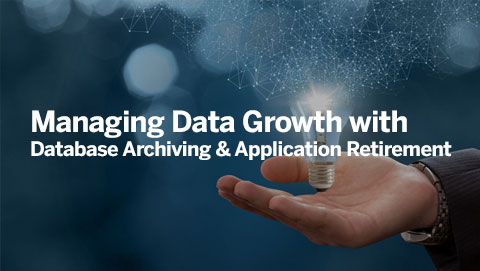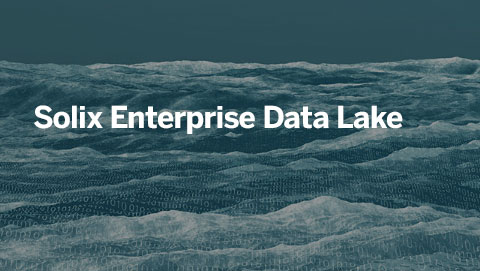Parallel Data Masking
What is Parallel Data Masking?
Parallel Data Masking is a method that simultaneously manipulates multiple data elements in the data masking workflows. This Palarallization is achieved by distributing the masking process across multiple threads or processors, significantly accelerating the masking cycle. Parallelizing the workloads eases the masking process and ensures seamless data transformation without compromising output quality.
Traditional masking methods may encounter bottlenecks when dealing with substantial volumes of information, leading to prolonged processing times. In contrast, this masking technique divides the workload, allowing multiple tasks to be executed simultaneously.
How Parallel Data Masking Works?
In contrast to serial masking, parallel masking is renowned for its expeditious and efficient safeguarding of extensive datasets, making it particularly well-suited for big data analytics and real-time data security applications. Let’s delve into the intricate workings of this powerful technique:
- Data Partitioning: The initial step involves dividing the dataset into smaller, manageable chunks. This partitioning allows simultaneous processing on multiple cores or processors.
- Masking Algorithm Distribution: A chosen data masking algorithm (e.g., tokenization, character substitution) is distributed across the available processing units.
- Concurrent Masking: Each processing unit independently applies the masking algorithm to its assigned data chunk, masking multiple data elements simultaneously.
- Data Reassembly: Once individual parts are masked, the processed chunks are reassembled to form the final, anonymized dataset.
Comparison: Sequential And Parallel Masking
Here’s a breakdown of serial and parallel approaches:
| Feature | Serial Data Masking | Parallel Data Masking |
|---|---|---|
| Processing | One data element at a time | Multiple data elements simultaneously |
| Implementation | Simpler | Requires specialized algorithms |
| Efficiency (large datasets) | Slower and less efficient | Faster and more efficient |
| Security Analysis Focus | Common approaches | More complex approaches |
Benefits of Parallel Data Masking
Parallel masking emerges as a game-changer for handling massive datasets in data security. Simulating multiple data elements offers advantages over traditional serial masking, particularly speed, scalability, and real-time protection. Let’s explore this masking technique’s benefits:
- Unleashing Scalability
- Large Dataset: Processing terabytes or even petabytes of data one element at a time can be painfully slow. Masking data parallel leverages the power of multiple cores or processors, drastically reducing processing times.
- Growing Datasets: It seamlessly scales to accommodate ever-growing datasets, making it the perfect fit for big data environments where traditional methods struggle.
- Boosting Agility
- Real-Time Masking: Its concurrent processing makes real-time masking a reality, ensuring sensitive information remains hidden even in dynamic environments like streaming applications.
- Faster Development Cycles: Testing and development processes often involve repeated data masking. Parallelizing the workloads can significantly accelerate these cycles, accelerating development timelines and improving overall efficiency.
- Additional Advantages
- Cost Savings The reduced processing time translates to lower infrastructure costs, especially when dealing with large datasets. Remember, time is money, and parallel masking saves both.
- Improved Resource Utilization: Parallelizing the workloads efficiently utilizes available processing power, freeing up resources for other tasks and allowing you to do more with the same hardware.
Limitations of PDM
While parallel masking offers impressive processing speed and scalability for large datasets, it has a few limitations. Understanding these potential drawbacks is crucial for making informed decisions when choosing this technique for data protection.
- Complexity and Security Challenges
- Algorithmic Adaptation: Traditional data masking algorithms designed for serial processing might not translate well to parallel environments. Adapting or developing algorithms for parallel execution requires specialized expertise and careful security considerations.
- Increased Attack Surface: The distributed nature of parallel processing introduces additional attack vectors for potential adversaries. Thorough security assessments and mitigation strategies are essential to identify and address these vulnerabilities.
- Security Analysis Complexity: Existing security analysis models built for serial masking might not directly apply to parallel environments. Developing new models or adapting existing ones requires significant effort and expertise.
- Potential Data Leakage
- Data Disclosure: Although individual data elements might be masked, combining and statistically analyzing multiple masked elements across parallel operations could reveal sensitive information. Implementing robust noise addition or differential privacy techniques can mitigate this risk.
- Reassembly Errors: Errors during data partitioning, processing, or reassembly could expose sensitive information. Rigorous data integrity checks and error-handling mechanisms are crucial to prevent such vulnerabilities.
- Other Considerations
- Hardware Requirements: Implementing parallel masking requires specialized hardware, such as multi-core processors or GPUs, which can be costly and resource-intensive.
- Limited Suitability for Small Datasets: The overhead of parallel processing might outweigh the benefits for smaller datasets, making serial masking a more efficient choice.
- Technical Expertise: Successfully implementing and maintaining parallel masking requires specialized technical knowledge and skills, which might only be available in some organizations.
Use Cases of PDM
Parallel Data Masking, with its ability to anonymize massive datasets simultaneously, unlocks exciting possibilities across various domains. Let’s explore some critical use cases where this multi-threaded approach shines:
- Big Data Analytics: In healthcare, finance, and social sciences, valuable insights often reside within vast, sensitive datasets. Parallel masking enables secure knowledge extraction by efficiently anonymizing large-scale data, preserving critical patterns while safeguarding individual privacy.
- Cloud Masking: Parallelizing the workloads empowers organizations to efficiently anonymize sensitive data before entering cloud environments, mitigating privacy risks and compliance concerns associated with cloud storage and processing.
- Dynamic Data Masking: It allows on-the-fly data masking based on user roles, permissions, or specific security policies. This ensures that only authorized users see the necessary level of detail, safeguarding sensitive information in real-time.
- Regulatory Compliance: With its efficient scalability, parallel masking empowers organizations to comply with regulations like GDPR, CCPA, etc, by effectively masking large datasets while adhering to complex compliance requirements.
- Data Sharing and Collaboration: It facilitates secure data sharing for collaborative research projects by efficiently anonymizing datasets, enabling researchers to leverage combined data insights while safeguarding individual privacy.
In conclusion, Parallel Data Masking is a beacon of efficiency and data security effectiveness. Its ability to swiftly and securely protect vast datasets, particularly in big data analytics and real-time security, makes it an invaluable asset for organizations navigating the complexities of modern data protection. As the digital landscape evolves, adopting advanced techniques like parallel masking becomes not just a choice but a strategic imperative for safeguarding sensitive information.
FAQs
Can Parallel Masking be applied to structured and unstructured data?
Parallel Masking can be applied to structured and unstructured data types, including databases, documents, and multimedia files, making it versatile for various data masking needs.
Is Parallel Masking suitable for real-time data masking applications?
Yes, Parallel Masking can be applied in real-time data masking scenarios. This allows organizations to anonymize data on the fly as it enters the system, ensuring continuous protection of sensitive information.
What are the hardware and software requirements for implementing Parallel Masking?
Implementing Parallel Masking requires hardware with multiple processing units (such as multi-core CPUs or GPU clusters) and software frameworks that support parallel processing, such as Apache Spark or Hadoop.





